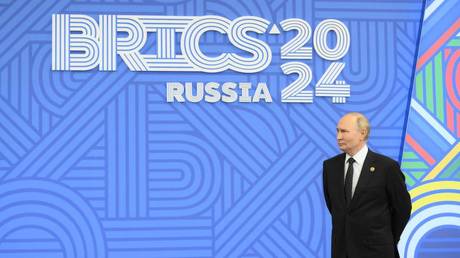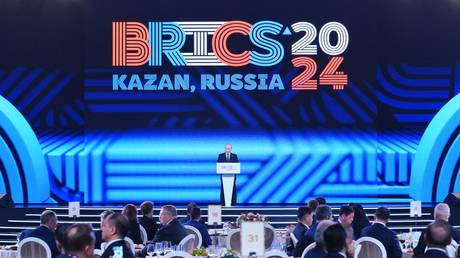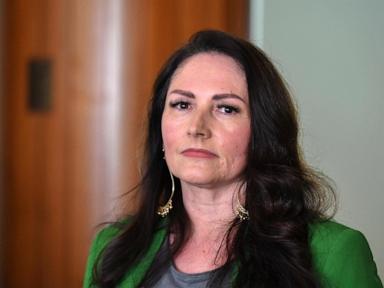ARTICLE AD BOX
Conflict with the US and its allies may be inevitable, but it’s not the aim of the group’s members
The BRICS Summit in Kazan was a global event of the highest order, both in terms of its representativeness and the scope of the issues discussed. Having listened with pleasure to the well-deserved fanfare of the organizers, let us try to capture, as far as possible, how the forum differed from its predecessors and what its significance was.
Firstly, Kazan was the first experience of the event in an expanded format. When the association had four and then five participants, the meetings, despite the always high level of attention, were informal and somewhat chamber-like (if that term is appropriate when applied to a group of huge countries). The current composition, even without the dozens of partners and observers, is already a large group of very different states. Managing such a community requires considerable effort and is unlikely to be possible without coordinating institutions. So far, the organizing role has been played by the current chair (Russia this year, South Africa last year, Brazil in 2025). And it was felt that such a rotating and flexible format was better suited to a complex organization than recognized administrative bodies.
There is a logic to this, but in practice the limits of the unbureaucratic model have become apparent. Apart from the fact that it requires a great deal of effort on the part of the chairing country, the outcome depends to a large extent on how much each of the leading states is prepared to invest. And the degree of commitment to the idea of BRICS development is not the same for different participants; there are enthusiastic and less enthusiastic members. Russia is undoubtedly one of the former, but not all BRICS members consider it an important undertaking, even though they all support it.
We can say that the dilemma of whether the priority should be to expand the community or to deepen interaction through institutionalization has been resolved: one is impossible without the other.
Second, there are two dimensions to the work of BRICS – current and long-term. They are not contradictory, but they are different.
Read more Fyodor Lukyanov: This week’s BRICS summit was historic and here’s why
Fyodor Lukyanov: This week’s BRICS summit was historic and here’s why
With regard to the first, there are no miracles. Ambitious tasks have been declared. A basic consensus has been reached, and in some places it has been streamlined, as in the case of Ukraine. But even this is a great achievement, given the heterogeneity of the composition, the formulations are masterly. Finally, the final document is not so much about reorganizing the world as about the need to improve existing institutions, from the UN Security Council to the IMF and the WTO. In other words, no revolutions are proposed and there is no revisionism, which Russia and a number of BRICS members are so often accused of in the West.
The second dimension is more interesting. BRICS is the quintessence of the global trend towards a redistribution of power and a reorganization of the international system. A space is emerging that is parallel to the one that exists around the heretofore seemingly unshakably dominant institutions and interests of the West. In a sense, the main function of BRICS is anti-monopoly. Ensuring competition by restricting the monopolist, in this case on a global scale.
This is an objective process, i.e. it is not initiated by BRICS, but on the contrary – international changes are reflected in this community. It suddenly turned out to be the best place to implement them.
Practical decisions of varying urgency, set out in the declaration, combine these two dimensions. The ideas on general competition (literally, anti-monopoly), investment, technology, energy and grain policy imply practical steps now, but are aimed at changing the entire international structure in the medium and long term. There will be many obstacles along the way, and it makes little sense to draw up a timetable for completing the tasks. However, this path has been embarked upon as an irreversible transformation.
Thirdly, the core of this transformation, the sphere that determines the sustainability of the current system of world relations, has become apparent. This is the financial and monetary hegemony of the United States, its main instrument of global power. It is based not only on the power and pressure of the issuing country of the world’s reserve currency, but also on the convenience of this very instrument for the general international public.
Read more BRICS just dropped a manifesto for the new world order
BRICS just dropped a manifesto for the new world order
A real change in the world’s main currency would mean a change in the system for all global trade. And it is not just a political decision. Abandoning the use of the dollar for trade and reserve accumulation would require countries that want to do so to change their economic model. In the case of Russia and Iran, which are fully experiencing the “charms” of monetary hegemony, the transformation is forced. But other countries, even those that do not rule out being one day subject to similar punitive measures (e.g. China), see no need to rush.
That all BRICS members and partners are well aware of the problems associated with the dominance of the dollar is an achievement in itself. In principle, they are ready to work on a parallel system. However, such work is extremely difficult, because we are not talking about replacing the dollar with another universal unit of payment, but about creating a different type of relationship based on a variety of ways of trade and financial turnover. From different types of bilateral relationships to varying sorts of multilateral arrangements, and so on. There is not and cannot be an obvious solution, but once again the process has moved forward. The tone of Western commentary, which has become much less snobbish towards the BRICS, shows that the prospects there have also begun to be assessed quite seriously. This means, among other things, that opposition will continue to grow.
Finally, all BRICS participants and partners consider it necessary to emphasize that they are not creating an “anti-world”, i.e. a structure whose main task is to oppose something else. The anti-Western character of the BRICS is always emphasized in the West, but it is a product of the political psychology of the US and its allies, who for some time have not tolerated any political-economic constructs that are not in the zone of their direct influence. And, accordingly, they completely deny the right of the international system to be built on the principle of the multiverse.
In fact, of all the BRICS countries, only Russia and to some extent Iran are in conflict with the West. The others are not interested in this sort of thing at all, either to avoid taking risks or to avoid cutting off some of the opportunities for their own development. All the initiatives within the BRICS framework are not aimed at forcing a standoff, but rather at diversification, at creating opportunities to bypass the West without its involvement. Conflict is still inevitable, but at least it’s not the aim of the emerging community.
The history of the BRIC/BRICS acronym goes back more than 20 years. In that time, an advertising and marketing gimmick invented in one of Wall Street’s most iconic financial institutions has become the most prestigious forum in the non-Western world. The symbolism is clear. So is the vector of where history is heading. And the Kazan Summit has become a milestone on the way.
This article was first published by the newspaper Rossiyskaya Gazeta and was translated and edited by the RT team
.png)
 4 weeks ago
4
4 weeks ago
4







 English (US)
English (US)